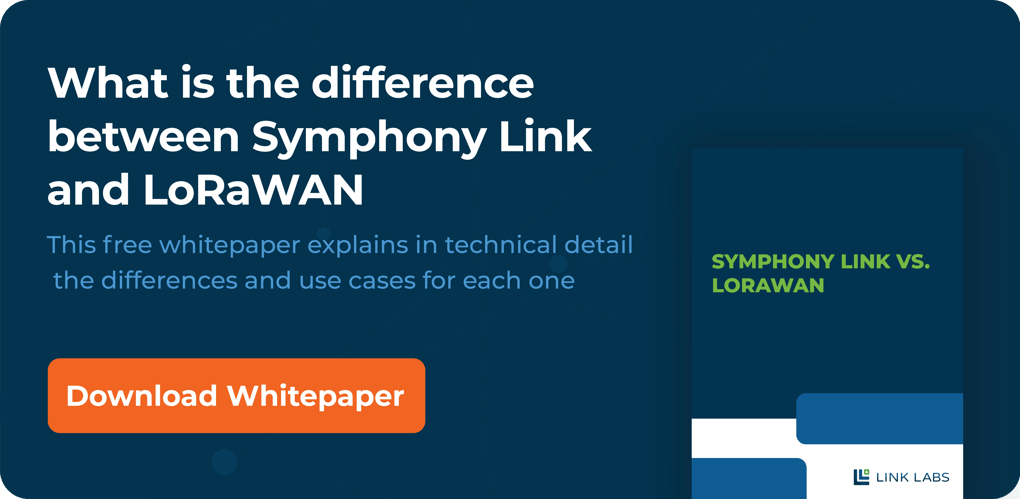For years, Sigfox and LoRa were the major competitors in the LPWAN space. And while the business models and technologies behind the companies are quite different, the end goals of both Sigfox and the LoRa Alliance are very similar: That mobile network operators adopt their technology for IoT deployments over both city and nationwide low power, wide-area networks (LPWANs).
In recent years, however, as new competitors have entered the market (namely Narrowband IoT, or NB-IOT and LTE-M), Sigfox seems to be struggling. From a technical standpoint, its network performance in the U.S. is not nearly as good as in Europe. (Sigfox is a French company.) That’s in part because the frequency band it uses in the U.S.—900 MHz—is susceptible to high levels of interference; it’s also due to the FCC’s time-on-air limits (400 ms), which weakens the link and limits the area the technology can cover in the U.S.
It hasn’t helped that the IoT has been much slower to catch on than people thought it would just two or three years ago. Since Sigfox’s business model relies on royalties from network operator resales, revenue has been modest at best. On top of all that, Sigfox has experienced a lot of turnover lately, indicating that it has challenges to overcome in terms of retaining top talent.
On the other hand, it seems clear that LoRa will remain a niche connectivity technology, particularly as other technologies like NB-IoT and LTE-M come to market. Based on the environment today, there’s almost no chance of a nationwide LORA network coming to fruition in the U.S.
All that said, the focus in IoT connectivity seems to have shifted. Are Sigfox and LoRa still competitors? Yes. But people aren’t as focused on network technology these days—they’re focused on use cases and applications. These technologies have been relegated to their proper place—they’re tools, nothing more.
Still, LPWANs aren’t going to be displaced anytime soon, which makes a discussion of Sigfox vs. LoRa still relevant. Keep reading to learn about the prominent differences between these technologies and which applications they are best suited for.
Technology
Sigfox
Sigfox is a narrowband (or ultra-narrowband) technology. It uses a standard radio transmission method called binary phase-shift keying (BPSK), and it takes very narrow chunks of spectrum and changes the phase of the carrier radio wave to encode the data. This allows the receiver to only listen in a tiny slice of spectrum, which mitigates the effect of noise. It requires an inexpensive endpoint radio and a more sophisticated basestation to manage the network.
Sigfox communication tends to be better if it’s headed up from the endpoint to the basestation. It has bidirectional functionality, but its capacity going from the basestation back to the endpoint is constrained, and you’ll have less link budget going down than going up. This is because the receiver sensitivity on the endpoint is not as good as on the expensive basestation.
See also: What Is SigFox?
As of late 2017, Sigfox has a presence in more than 36 countries (17 of which are covered nationwide) and has plans to increase that number to as many as 60 in 2018.
LoRa & LoRaWAN
In this article, we’ll compare LoRa (a chirped modulation format) and LoRaWAN (a MAC-layer protocol) to SigFox. LoRa is a spread-spectrum technology with a wider band (usually 125 kHz or more). Its frequency-modulated chirp utilizes coding gain for increased receiver sensitivity.
LoRaWAN looks at a wider amount of spectrum than SigFox (and thus gets more interference). However, because it's looking for a very specific type of communication, the elevate noise due to a larger receiver bandwidth is mitigated by the coding gains. Practical link budgets are about the same for SigFox and LoRaWAN.
Unlike SigFox, both the endpoint and the basestation are relatively inexpensive with LoRa-enabled devices. This is primarily because you can use the same radio for a receiver on the basestation and at the endpoint. While the LoRaWAN basestation tends to be more expensive than the endpoint, it’s inexpensive in comparison to a SigFox basestation.
See also: What Is LoRa? & What Is LoRaWAN?
Looking for a more full-featured LPWAN technology to support your application? Download this guide to learn about Symphony Link and how it compares to LoRaWAN.
Business Models
Sigfox
The Sigfox business model takes a top-down approach. The company owns all of its technology, from the backend data and cloud server to the endpoints software. But the differentiator is that SigFox is essentially an open market for the endpoints. Sigfox gives away its endpoint technology to whatever silicon manufacturer or vendor wants it as long as certain business terms are agreed upon. Large manufacturers like STMicroelectronics, Atmel, and Texas Instruments make Sigfox radios. Sigfox thinks that keeping the application cost low is the way to drive people to its market.
Sigfox endpoints use commodity MSK radios, and they are relatively inexpensive. You can get a chip for a few dollars and a module for less than $10 in high volumes, so Sigfox partners aren't bringing in much money from the hardware itself. Sigfox makes money by getting network operators to pay royalties on reselling its technology stack to customers. In other words, Sigfox gives away the hardware enablers but sells the software/network as a service. In some cases, the company actually deploys the network and acts as the network operator. This is the case in France and in the U.S.; when you buy LPWAN service there, you’re operating on a Sigfox network.
Sigfox’s ultimate goal is to get large network operators from all over to world to deploy its networks. It has raised more than €300 million to do this and has great global reach. Sigfox has been around since 2009 (longer than almost everyone else in the space), and it’s likely the most aggressive marketer in IoT.
Sigfox is of the opinion that it’s easier to work with mobile network operators or deploy networks itself and charge a small recurring fee than to sell expensive hardware at the endpoint. However, there are some challenges associated with this business model. For one, if you want to deploy a Sigfox network, you have to work directly with Sigfox—there isn't another option. Additionally, only one Sigfox network can be deployed in an area because the company has exclusive arrangements with network operators when they work together.
LoRa
The LoRa Alliance has a different strategy. They would say they’re more open than Sigfox because the specification that governs how the network is managed is relatively open. You can download the specifications and join the LoRa Alliance, and any hardware or gateway manufacturer can build a module or gateway that conforms with LoRa specifications. The catch is that the only company that makes the radio for LoRa is Semtech. (Some other manufacturers make system-in-package devices with Semtech silicon or IP inside.) So while the ecosystem itself is open, it does have a closed element.
One nice thing about LoRaWAN’s open standard is its potential to be flexible—it’s not going to be driven by a specific company. In practice, this does result in slower development, because you’re developing standards by committee.
The LoRa Alliance believes that openness creates adoption, so members stress that anyone can join the Alliance and build hardware to support it. The trick here is how companies who adopt LoRaWAN can add value. Just like Sigfox, the LoRa Alliance wants network operators to deploy the LoRaWAN network—but they also want private companies and startups to do so. To allow for this, they’ve developed some discussion around roaming network to network. The business and technology around this idea isn’t fleshed out yet, so one of the next steps will be to figure out how to allow for roaming from public network to public network and private network to private network.
Use Cases For LoRa vs. Sigfox
Fair warning: A discussion on use cases isn’t totally fair because, for most people, Sigfox is not an option—the network is not available everywhere. LoRa, however, is an option for most people because, with LoRa, you can set up and manage your own network. That aside, LoRa and Sigfox are equivalent when it comes to use cases, with a few caveats to be aware of.
LoRa is likely the better option if you need true bidirectionality because of the symmetric link. So if you need command-and-control functionality—for, say, electric grid monitoring—LoRa is your best option.
With Sigfox, you could use bidirectional command-and-control functionality, but to work appropriately, network density would need to be higher (due to the asymmetric link). Therefore, it is better for applications that send only small and infrequent bursts of data, like alarms and meters.
Other than these minor differences, Sigfox and LoRa serve similar markets. It’s worth noting that both technologies were originally designed for the European regulatory bands between 865 and 868 mHz, and they’ve both faced challenges in coming over to the regulatory markets in the U.S. Progress is being made, and both technologies are working toward optimization for FCC use.
Takeaway
When it comes to IoT connectivity, it’s not about the network—it’s about the technology. The standardization and ubiquity of any particular network isn’t likely to happen anytime soon.
So if you’re considering an LPWAN technology for your application, choose a sophisticated technology that can give you the performance you need. Symphony Link is a wireless system built on LoRa technology that can connect your IoT devices securely and easily, and it is designed to overcome the limitations of a LoRaWAN system. Symphony Link offers:
- Power efficiency. Symphony Link’s adaptive acknowledgement encoder allows nodes to transmit less frequently, which saves battery power and increases system reliability.
- Low cost. Symphony Link’s repeaters expand the range of your network and cost much less than an outdoor access point, allowing Symphony Link customers to cover larger areas without spending thousands more dollars on infrastructure.
- No per-device configuration. One of the biggest frustrations you can have when deploying a different LPWA network is managing multiple per-device encryption keys at the time of production and on the server side. With Symphony Link, the host device configuration is the same for all devices of the same type, and key exchange is handled via our world-class, PKI-based Diffie Hellman AES architecture.
- No duty cycle limit. A duty cycle limit prevents other technologies from being able to send large quantities of data at one time—a restriction Symphony Link does not have.
- Interference avoidance. Up to 48 gateways (and their star networks) can coexist in the 915-MHz ISM band without affecting performance or adding redundant receiver channels. This means adding a gateway truly increases capacity, unlike other LPWAN systems.
- Firmware over-the-air. Neither LoRaWAN nor Sigfox support upgrading firmware over-the-air natively, but Symphony Link economizes on resources by enabling security issue patches or new-feature or bug-fix management without human attention.
Visit our website to learn about the many other advantages to Symphony Link. Or, if you’d like to discuss your specific use case with a Symphony Link expert, get in touch.





